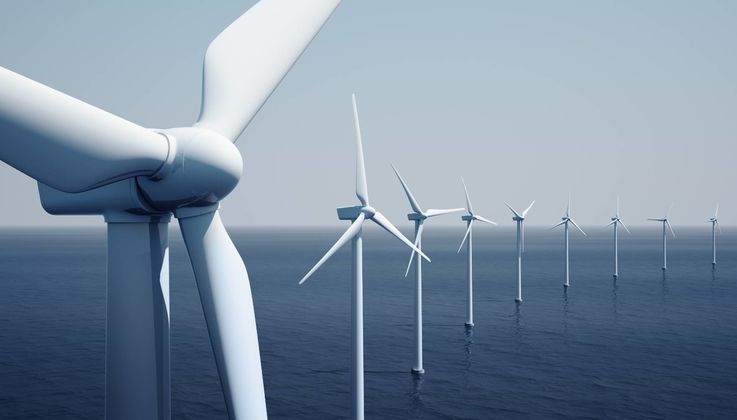
Let the wind blow!
Wind turbines are giant computer-controlled machines made of high-tech materials. Their rotor blades are now longer than the wingspan of an Airbus A380 aircraft. And even larger ones are being developed. Evonik ensures that the rotor blades can continue to withstand wind and weather in the future.
Humans have been using wind energy to navigate rivers and the seas since the time of the ancient Egyptians. Not quite as early, but equally impressive: The beginnings of using wind energy on dry land can be dated back to simple wooden windmills used in the Arab region more than 2000 years ago. Today's windmills are giant computer-controlled machines made of high-tech materials. Instead of grinding grains and moving water, they are spread all over the world to generate electricity to supplement the existing regional power grids. By the end of 2019, wind turbines with a nominal capacity of just over 651 gigawatts were installed which are now delivering energy worldwide. And the trend is only going upwards as more and more offshore and onshore wind farms are built.
In some instances, the new generations of wind turbines are much higher than New York's Statue of Liberty, with rotor blades larger than the wingspan of an Airbus A380 aircraft. And that's not all: the development of even larger ones is in progress. As these huge blades have to withstand extreme winds and weather for more than 20 years with very little maintenance, there are many challenges in manufacturing their high-performance rotor blades.
With the development of even larger rotor blades the demands on the manufacturing side for the bonding processes is also changing as increasing bond line lengths require adhesive systems with extended gel times. To address this issue and to meet upcoming challenges in wind turbine blade production, Evonik's Crosslinkers business line has enhanced its established Ancamide® 3030 curing agent by extending its gel time from around 110 minutes to more than 250 minutes with the development of the new grade. Besides their differences in gel time and viscosity, both curing agents - regular and enhanced - offer a similar level of mechanical properties and thermal resistance after curing with standard epoxy resins at 70°C for 5 hours. With its series of the Ancamide® 3030 curing agent and its derivates, Evonik provides a versatile and easy-to-integrate tool-box enabling formulators to cope with upcoming challenges in wind turbine blade production.



